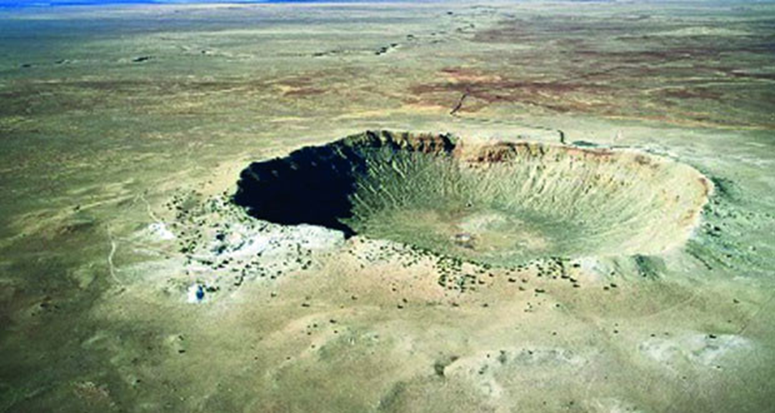Find the oldest crater caused by a meteorite fall on Earth

Earth is littered with approximately 190 large craters, yet scientists know only a few of them. Recently, a NASA scientist analyzed the age of a meteorite crater called "Yaraboba" in Australia, where they found the oldest crater caused by a meteorite falling on the surface of the Earth more than 2.2 billion years ago, which is equivalent to about half the current age of the Earth, according to For a study published in the scientific journal Nature Communication.
"It's 200 million years older than the oldest previously known crater, which was the over 200-kilometer-long Vredefort Dome in southern Africa," said Timmons Erickson, a research scientist in the Astronomical Materials Research and Exploration Sciences, or ARES, Division at NASA's Johnson & Johnson.
space center

Yarraboea crater in Australia..the oldest crater, 2..2 billion years ago
The crater, which was caused by the impact of the celestial body on what is known today in the state of Western Australia, “Yaraboba”, has a diameter of about 70 kilometers, but today it has completely eroded.
During the first phase of the Earth's life, celestial bodies were continuously falling on its surface, but the resulting craters disappeared due to the continuous movement of the planet's lithosphere, scientifically known as tectonic plates, as well as the erosion of these plates over billions of years.
Impact in Australia.. affected the Earth's climate

The impact in Australia is likely to have affected the climate
Previously, researchers used to classify the "Vredefort" crater, located in northern South Africa, as the oldest and largest crater on Earth resulting from the impact of celestial bodies on Earth, until the age of the "Yarabuba" crater was calculated and it turned out that it is about 200 million years older.
The researchers suggest that the impact that occurred in Australia affected the Earth’s climate, as large parts of the planet were covered at that time with a great depth of ice, as there are traces of deposits of glaciers estimated to be at least 225.2 billion years old that were found in the Trasvall region in South Africa. .
The impact led to the evaporation and melting of the ice

The hole spewed huge amounts of carbon dioxide
But the ice then receded for at least 400 million years, say the researchers, who associate this with the impact.
The researchers also believe that the hole spewed huge amounts of carbon dioxide, water vapor and other gases into the Earth's atmosphere, which was then poor in oxygen.
And if the region at that time was covered with a thick layer of ice, then this may have led to the evaporation and melting of the ice, and in the event that the steam reached the upper layer of the atmosphere, this might have caused the phenomenon of global warming, leading to a rise in the Earth’s temperature, but the research team acknowledged that this It is no more than a possibility.
Source: websites

